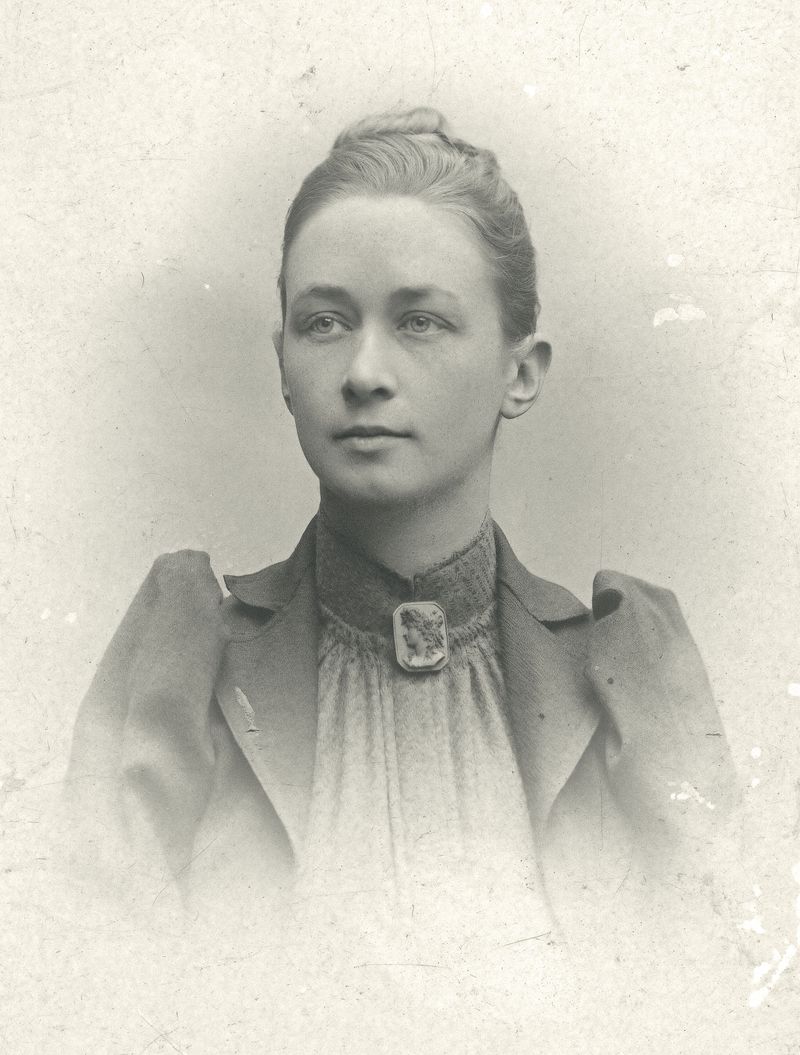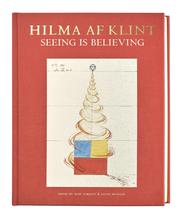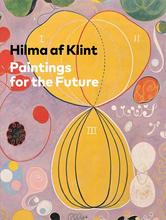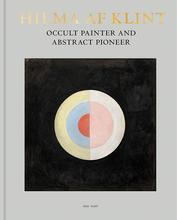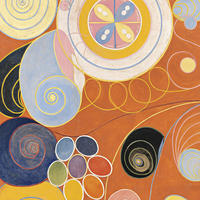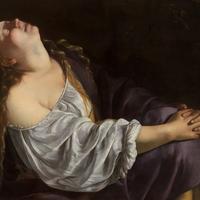More about Hilma af Klint
- All
- Info
- Shop
Works by Hilma af Klint

Sr. Contributor
Before Kandinsky and Malevich, there was Hilma af Klint. But until a little over thirty years ago, no one would have understood that sentence.
Hilma af Klint’s is a story of many firsts. Born in Sweden in 1862, af Klint was one of the first women to study at the Royal Academy of Fine Arts in Stockholm. She even graduated with honors. Af Klint began a relatively low-key art career making botanical paintings, landscapes and portraits – pretty run of the mill stuff for a turn-of-the-century female artist. At this rate, it makes sense that no one would have expected her to achieve abstraction in painting years before Kandinsky did.
Fortunately, af Klint’s obscurity is not due to any lack of talent. Given her innovations in early-twentieth-century painting, it is shocking that we did not discover her sooner. Although she was a celebrated figurative painter, no one knew about her brave forays into the spiritual world of painting simply because she didn’t tell anyone. Instead, she worked in secret, only confiding in a close group of fellow female artists known as The Five. By 1896, The Five were holding spiritual meetings and seances every Friday night in which they sought counsel from spirit guides. To record their communications with spiritual beings, they engaged in automatic writing and drawing – no matter that this was way before the Surrealists used these methods to tap into the subconscious.
In 1904, a spirit named Amaliel gave af Klint the commission of a lifetime. Amaliel wanted af Klint to create a painting that embodied a spiritual message for the world. In doing so, af Klint developed the first images that lacked any reference to the physical world, ultimately creating the earliest abstract paintings. Other painters didn’t engage with abstraction until the second decade of the twentieth century. Af Klint sought guidance from otherworldly beings like Amaliel, whom af Klint believed guided her hand while she painted. At times, she worked feverishly, trying to complete her mission. She even collapsed while in the throes of frenetic creation.
Af Klint also wrote over 26,000 pages of notes explaining and exploring the complex themes in her work. Her notes include glossaries and translations for the symbolic language she invented alongside her abstractions. Unlike the unrestrained bravado of male artists who claim to be solitary geniuses, af Klint was much more humble and unsure of what would become of her work. When she died in 1944, she had completed over 1,200 abstract paintings and works on paper, but it took over forty years for anyone else to see these works.
Hilma left all of her works to her nephew Erik and told him to safeguard them for twenty years after her death. Although Erik never understood his aunt’s impassioned and spiritual art, he heeded her strange request and preserved her legacy in secret. Af Klint finally made her debut in 1986, when she was a key figure in a LACMA exhibition that explored the relationship between art and spirituality. Now, knowledge of her work and her solitary practice is helping to reimagine the established histories of modernism that tell the story of abstract art.
Sources
- Ferren, Andrew. “In Search of Hilma af Klint, Who Upended Art History, But Left Few Traces.” The New York Times. 21 October 2019. https://www.nytimes.com/2019/10/21/travel/stockholm-hilma-af-klint.html. Accessed 25 July 2021.
- Kellaway, Kate. “Hilma af Klint: a painter obsessed.” The Guardian. 21 February 2016. https://www.theguardian.com/artanddesign/2016/feb/21/hilma-af-klint-occ…. Accessed 25 July 2021.
- Moderna Museet. “Hilma af Klint.” Exhibitions. https://www.modernamuseet.se/stockholm/en/exhibitions/hilma-af-klint-20…. Accessed 25 July 2021.
- Smith, Roberta. “‘Hilma Who?’ No More.” The New York Times. 11 October 2018. https://www.nytimes.com/2018/10/11/arts/design/hilma-af-klint-review-gu…. Accessed 25 July 2021.
- The Hilma af Klint Foundation. “About Hilma af Klint.” https://www.hilmaafklint.se/en/about-hilma-af-klint/. Accessed 20 July 2021.
- The Solomon R. Guggenheim Foundation. “Hilma af Klint: Paintings for the Future.” Exhibitions. https://www.guggenheim.org/exhibition/hilma-af-klint. Accessed 20 July 2021.
Featured Content
Here is what Wikipedia says about Hilma af Klint
Hilma af Klint (
Swedish pronunciation: [ˈhɪ̂lːma ˈɑːv ˈklɪnːt]; 26 October 1862 – 21 October 1944) was a Swedish artist and mystic whose paintings are considered to be among the first major abstract works in Western art history. A considerable body of her work predates the first purely abstract compositions by Kandinsky, Malevich, and Mondrian. She belonged to a group called "The Five", a circle of women inspired by Theosophy who shared a belief in the importance of trying to contact the "High Masters", often through séances. Her paintings, which sometimes resemble diagrams, were a visual representation of complex spiritual ideas.
Check out the full Wikipedia article about Hilma af Klint

